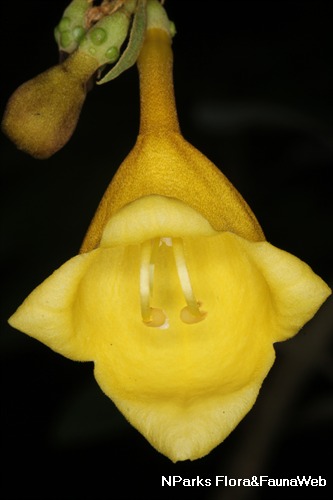
Name
Classifications and Characteristics
| Plant Division | Angiosperms (Flowering Seed Plants) (Dicotyledon) |
|---|---|
| Plant Growth Form | Shrub |
| Lifespan (in Singapore) | Perennial |
| Mode of Nutrition | Autotrophic |
| Plant Shape | Irregular |
| Maximum Height | 10 m |
Biogeography
| Native Distribution | South China, India, Sri Lanka, Bangladesh, Myanmar, Thailand, Cambodia, Vietnam, Peninsular Malaysia, Borneo, and Java. |
|---|---|
| Native Habitat | Terrestrial (Primary Rainforest, Secondary Rainforest, Disturbed Area / Open Ground) |
| Preferred Climate Zone | Tropical, Sub-Tropical / Monsoonal |
| Local Conservation Status | Non-native (Spontaneous (Naturalised)) |
Description and Ethnobotany
| Growth Form | It is a bushy, spiny shrub up to 10 m tall, with yellowish or brownish-white smooth bark. |
|---|---|
| Foliage | Its opposite, stalked leaves have membranous, entire or 3–5-lobed leaf blades that are usually drop-shaped to narrowly drop-shaped, dark green above, green below, covered with fine hair, 2–4 by 1–3 cm, and have 2–3 pairs of veins. |
| Flowers | Its flowers are yellow, 4 cm long, covered with fine hair on the outer surface, and arranged in clusters. |
| Fruit | Its drupe (fruit) is pear-shaped, yellow when ripe. |
| Habitat | It grows in open habitats, gaps and margins, forest edges, thickets, dry forests, and secondary vegetation, from sea level up to 500 m altitude. It occurs locally in Pulau Ubin and other sites. |
| Cultivation | It can be propagated by seed. |
| Etymology | Gmelina, commemorating Johann G. Gmelin (1709-1755), a German naturalist and traveller in Siberia, professor of botany at Tübingen University; Latin asiatica, of Asia, referring to the natural distribution of this species |
| Ethnobotanical Uses | Medicinal: It is used as a demulcent and alterative. Its root is employed as a blood purifier and in the treatment of rheumatism, incontinence, gonorrhoea and syphilis as well as for infections of the bladder and to promote micturition. Its macerated leaves are used in urogenital affections. Soaking the leaves in water renders a mucilaginous mixture, which is credited with antibacterial properties. An infusion of the shoots is used internally, against rheumatism, yaws and nervous diseases. |
Landscaping Features
| Landscaping | It is suitable for parks for its attractive yellow flowers and ornamental foliage. |
|---|---|
| Desirable Plant Features | Ornamental Flowers, Ornamental Foliage |
| Landscape Uses | Parks & Gardens, Small Gardens |
| Usage Hazard - Cons | Spines/Thorns - Stem/Branch |
Fauna, Pollination and Dispersal
| Pollination Method(s) | Biotic (Fauna) |
|---|---|
| Seed or Spore Dispersal | Biotic (Fauna) |
Plant Care and Propagation
| Light Preference | Full Sun |
|---|---|
| Water Preference | Moderate Water |
| Rootzone Tolerance | Moist Soils, Well-Drained Soils, Fertile Loamy Soils |
| Maintenance Requirements | Moderate |
| Propagation Method | Seed |
Foliar
| Foliage Retention | Evergreen |
|---|---|
| Mature Foliage Colour(s) | Green |
| Mature Foliage Texture(s) | Smooth |
| Foliar Type | Simple / Unifoliate |
| Foliar Arrangement Along Stem | Opposite |
| Foliar Attachment to Stem | Petiolate |
| Foliar Shape(s) | Non-Palm Foliage (Ovate) |
| Foliar Venation | Pinnate / Net |
| Foliar Margin | Entire, Palmately Lobed |
Floral (Angiosperm)
| Flower & Plant Sexuality | Bisexual Flowers |
| Flower Colour(s) | Yellow / Golden |
|---|---|
| Flower Grouping | Cluster / Inflorescence |
| Flower Location | Axillary |
| Individual Flower Shape | Campaulate / Bell-shaped |
Fruit, Seed and Spore
| Mature Fruit Colour(s) | Yellow / Golden |
|---|---|
| Fruit Classification | Simple Fruit |
| Fruit Type | Fleshy Fruit , Non-Accessory Fruit |
Image Repository
Others
| Master ID | 31883 |
|---|---|
| Species ID | 6284 |
| Flora Disclaimer | The information in this website has been compiled from reliable sources, such as reference works on medicinal plants. It is not a substitute for medical advice or treatment and NParks does not purport to provide any medical advice. Readers should always consult his/her physician before using or consuming a plant for medicinal purposes. |

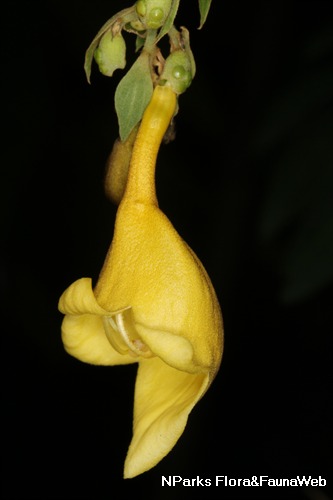
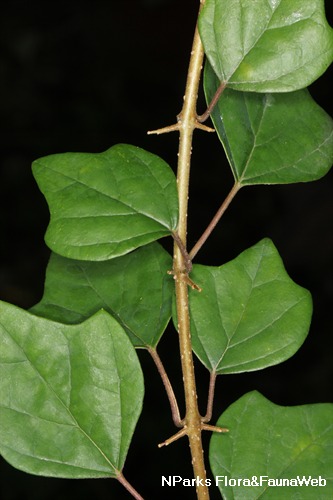
_lowres.jpg)
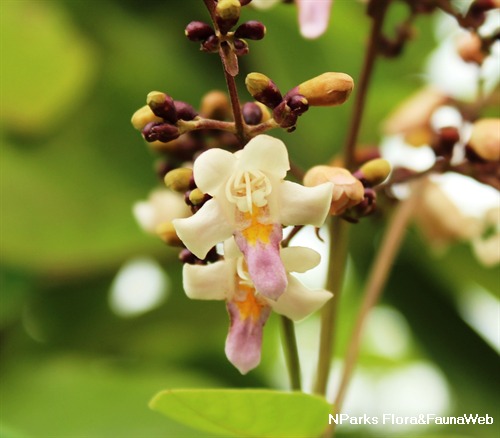
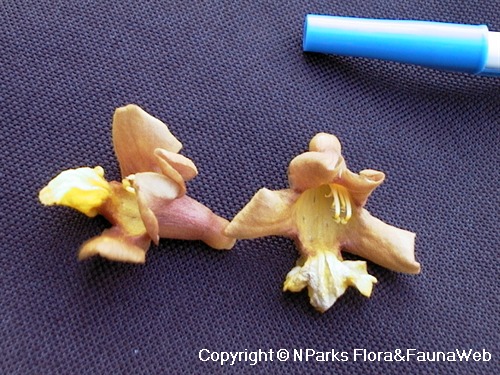
_lowres.jpg)